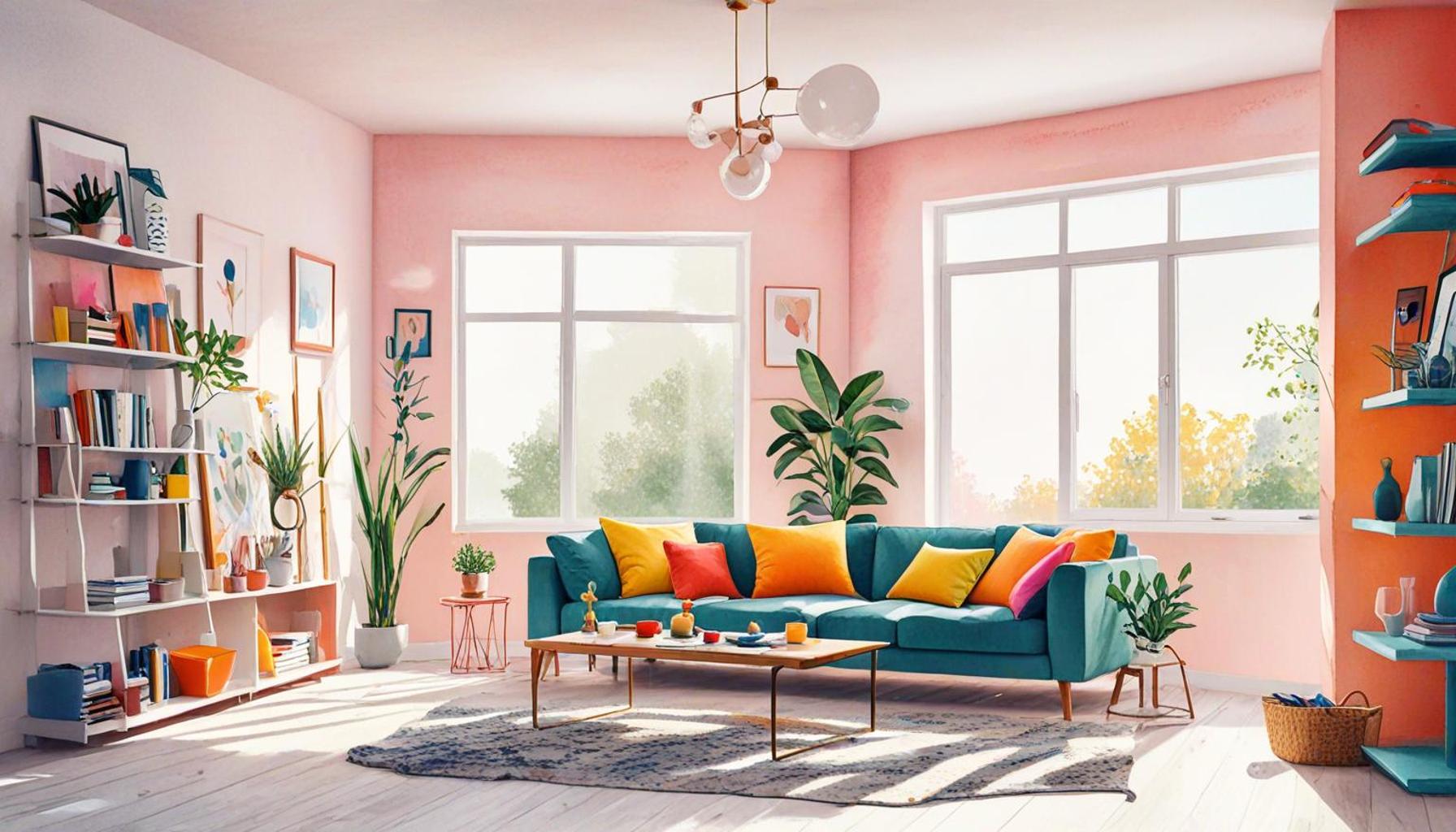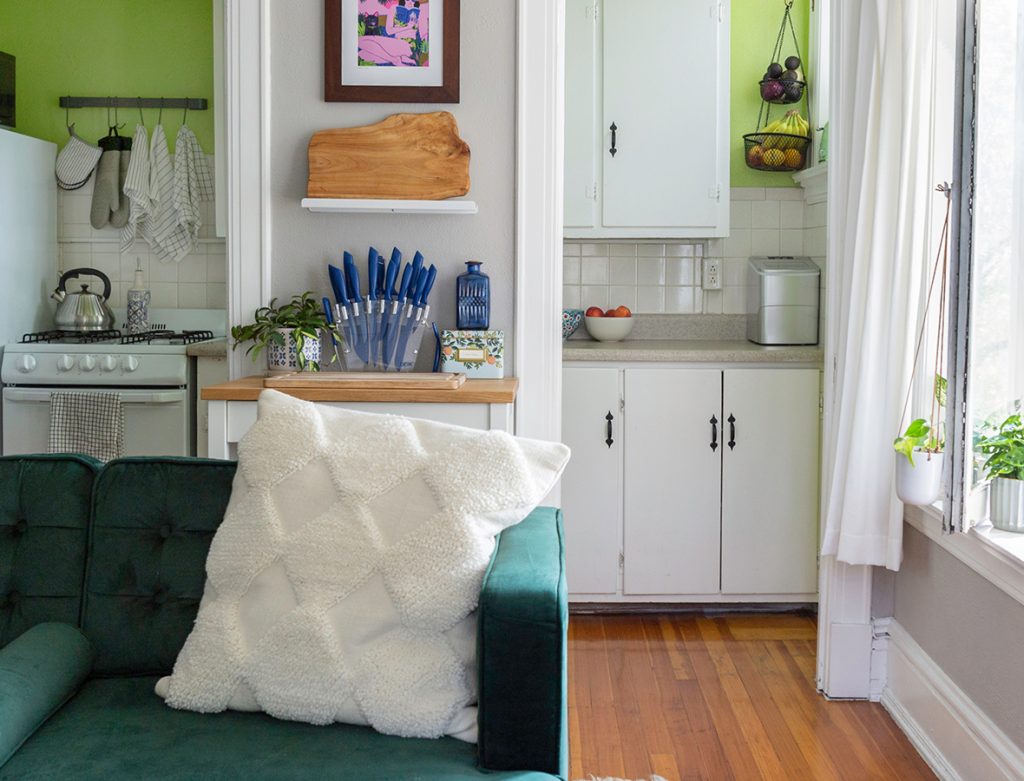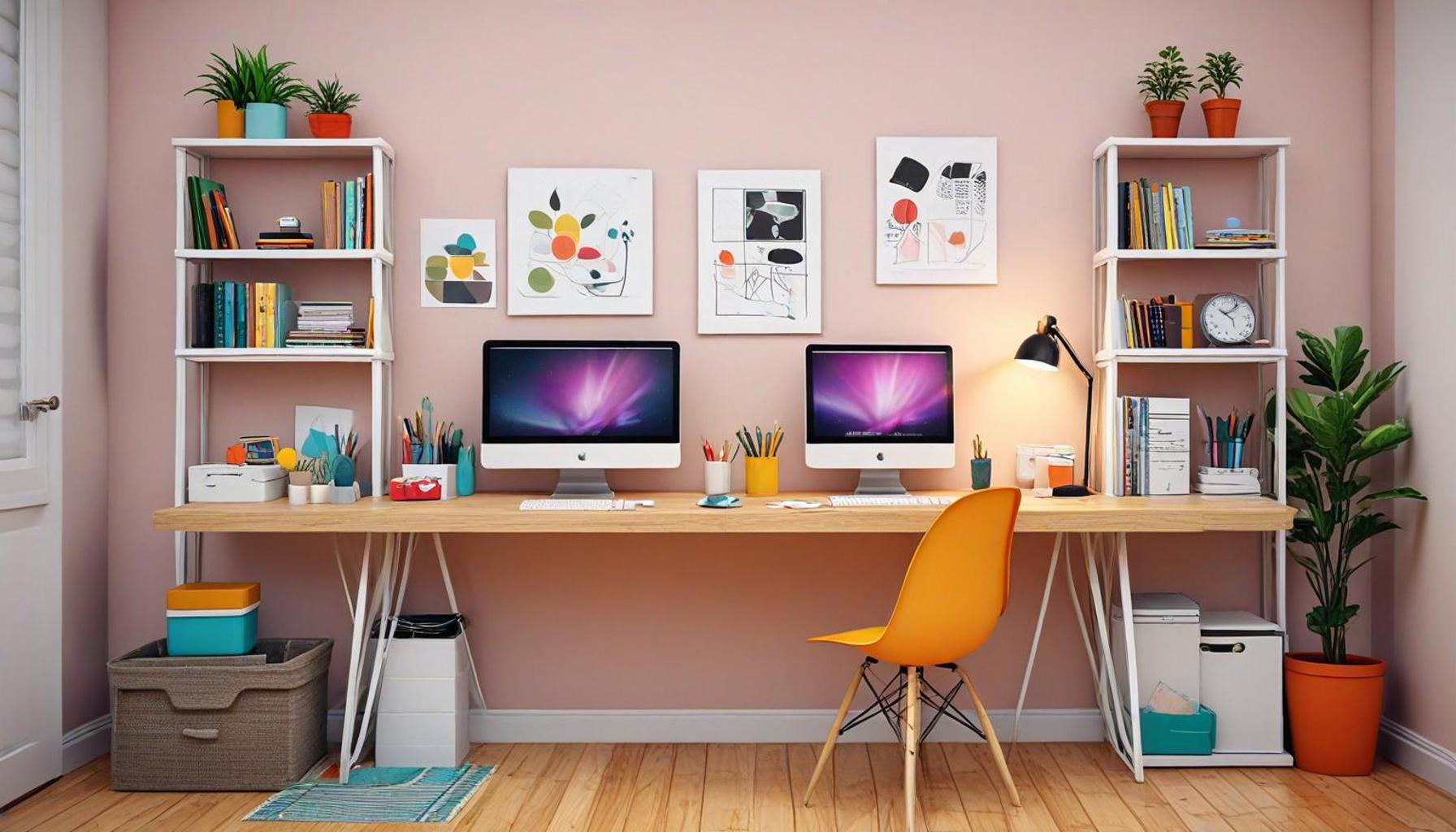Maximize Your Space Minimalist Tips for Multi-Functional Home Design

In today’s fast-paced world, the need for effective personal organization and efficient use of space has never been more crucial. With the rise of minimalism, individuals are embracing the idea of simplifying their lives by decluttering and making their homes more functional. This movement encourages us to rethink how we utilize every inch of our living spaces.
When it comes to home design, the concept of multi-functional spaces stands at the forefront. By merging aesthetics with practicality, we can create environments that adapt to our needs while maintaining a sense of calm and order. Whether you live in a tiny apartment or a spacious house, optimizing your living area can significantly enhance your quality of life.
In this article, we will explore innovative tips and strategies for designing spaces that serve multiple purposes without sacrificing style. Get ready to discover our Top 5 ways to maximize your home’s potential through thoughtful minimalism, ensuring every corner is purposeful and inviting.
DISCOVER MORE: Click here to create your perfect hobby space
Espaços Multifuncionais: Como Otimizar Cada Canto da Sua Casa com Minimalismo
In the hustle and bustle of modern life, there’s a growing movement towards reducing clutter and increasing efficiency in our living spaces. Enter minimalism: a philosophy that embodies the idea of “less is more.” By creating multifunctional spaces in our homes, we manage to maximize utility and maintain style. With the right strategies, every corner of your home can be transformed into a versatile area tailored to your needs. Below, we delve deeper into five key strategies for optimizing these spaces through minimalism, uncovering how even the smallest changes can dramatically enhance your living environment.

5. Utilize Underutilized Areas
Many homes possess neglected alcoves and odd spaces that have the potential to be so much more. Turning these areas into functional spaces can significantly uplift your living environment by adding efficiency and charm. For instance,:
- Under-Stairs Storage: Typically, the space beneath a staircase is overlooked. By installing shelves or using smartly-sized bins, you can convert this nook into an efficient storage solution for shoes, cleaning supplies, or seasonal items. This not only saves space but also keeps your home neatly organized.
- Corner Shelves: Corners are often left bare but are excellent for installing floating shelves. These can be used to display decorative items like photo frames or plants, or to store books and gadgets, all without taking up valuable floor space.
- Vertical Gardens: Lack of yard space doesn’t mean you have to forgo the beauty of nature. Wall-mounted planters create a vertical garden that infuses your home with life and enhances air quality, offering a practical yet aesthetic solution.
Incorporating these strategies helps you make the most of your every square inch, turning previously ignored spots into star features of your home.
4. Multi-Purpose Furniture
The furniture you choose determines how you maximize space in your home. Multi-purpose furniture is not only a space-saver but often easier on the budget, making it a worthwhile investment. Consider options such as:
- Sofa Beds: Especially useful for small apartments, sofa beds provide a comfortable sleep solution for overnight guests without needing a dedicated guest room.
- Ottomans with Storage: These versatile pieces can serve as extra seating or a footrest and usually include space within to store blankets, magazines, or board games.
- Extendable Dining Tables: For those who host dinners occasionally, extendable tables are a blessing, offering space to accommodate guests and folding away for everyday use with minimal footprint.
By incorporating multi-purpose furniture, you can achieve a cleaner aesthetic without sacrificing the functions necessary for day-to-day living.
3. Create a Flexible Home Office
With remote work becoming a staple, having a dedicated office space at home is more relevant than ever. Flexibility is essential, as many people don’t have the luxury of a separate office. To enhance this setup:
- Choose a Convertible Desk: Desks that double as workstations and crafting tables provide dual functionality. Some models fold away completely when not in use, freeing up valuable space.
- Use a Room Divider: A tasteful room divider can delineate a workspace from a living area, offering privacy and focus without permanent walls that might make the environment feel cramped.
- Declutter Regularly: Papers and supplies can quickly disrupt the serenity of a workspace. By setting time aside each week to clear your desk, you ensure the area remains inspiring and conducive to productivity.
A flexible, decluttered workspace is not only a requirement of the modern home but also a fundamental aspect of living minimally.
2. Embrace Minimalistic Decor
The decor in your space has the potential to expand or limit the atmosphere you’re creating. By adopting a minimalistic approach, you ensure each element serves a purpose, whether it is aesthetic, functional, or both:
- Neutral Color Palettes: Light colors such as whites, greys, and beiges can make spaces feel open and airy, increasing the perceived space without actual physical expansion.
- Art That Inspires: Instead of cluttering walls with multiple pieces, choose a few large, impactful artworks that resonate with you, becoming conversation starters and personal statement pieces.
- Natural Elements: Simple touches like wooden furniture or a vase of fresh flowers can blend minimalism with warmth, adding life to any room without overwhelming the senses.
This approach allows for simplicity in design while ensuring your space remains personal and inviting.
1. Design with Intentional Zoning
The most transformative way to achieve multifunctional spaces is through intentional zoning. This involves designing spaces to have distinct purposes, each area clearly defined yet cohesive within the overall environment. Here are some effective ways to apply this concept:
- Area Rugs: Rugs can effectively demarcate zones within an open plan, such as a relaxation area apart from a dining space. Each rug outlines a different purpose and adds a layer of comfort.
- Lighting Variations: Different lighting options, from overhead pendant lights to soft table lamps, can create diversity in mood and illumination, helping define activity spaces.
- Architectural Elements: Sliding doors, curtains, or even furniture arrangements can establish separate zones while fostering an open flow and feel.
Intentional zoning maximizes effectiveness, ensuring your home works for your lifestyle while retaining aesthetics grounded in minimalism.
By embracing these strategies, you can begin to craft practical, multifunctional spaces in your home. Not only will this endeavor improve your current living conditions, but it will also set a foundation for a future-oriented lifestyle where functionality and simplicity coexist harmoniously.
| Category | Description |
|---|---|
| Space Utilization | Utilizing vertical and hidden spaces can create multifunctional areas that promote efficiency in smaller homes. |
| Adaptability | Implementing furniture that can easily adapt, such as foldable tables, enhances flexibility in day-to-day living arrangements. |
| Aesthetics | A minimalist approach not only improves functionality but also contributes to a serene and visually appealing atmosphere in the home. |
| Sustainability | Choosing quality minimalistic furniture can lead to a more sustainable lifestyle, reducing waste and fostering a slower design ethos. |
In exploring the various aspects of multifunctional spaces, understanding space utilization becomes fundamental. By leveraging walls, under-bed storage, and clever organization techniques, a home can transform into a harmonious environment where every inch counts. Additionally, with the rising popularity of multifunctional furniture, adaptability in today’s homes allows for immediate adjustments to accommodate diverse activities—be it a remote work setup in the morning or a social gathering in the evening.Moreover, aesthetics cannot be overlooked. A minimalist design is not merely about reducing clutter; it embraces the idea of beauty in simplicity. Clean lines, serene colors, and well-placed decor create a soothing ambiance that promotes relaxation and mindfulness. This visual clarity enhances the overall experience of living spaces, inviting a sense of peace and well-being.Lastly, sustainability is an increasingly relevant consideration in modern home design. Opting for high-quality, multifunctional furniture contributes to a long-lasting environment that minimizes the need for frequent replacements. This thoughtfulness not only fosters eco-friendly practices but also aligns with the growing demand for sustainable living practices in contemporary society. Exploring these dimensions will not only improve individual living conditions but also cultivate an encompassing awareness of the importance of multifunctional spaces in the broader context of design.
DIVE DEEPER: Click here to learn more
FAQs on Multifunctional Spaces: Maximizing Your Home with Minimalism
What are multifunctional spaces, and why are they important in a minimalist home?
Multifunctional spaces are areas in your home that are designed to serve more than one purpose. In a minimalist home, these spaces are crucial because they help you maximize the use of your available square footage without overwhelming the area with clutter. By optimizing every corner with purposeful design, you can keep your home tidy and efficient, which is a core principle of minimalism.
How can I start creating multifunctional spaces in my home?
To begin creating multifunctional spaces, start by assessing each room’s primary use and identifying secondary needs that can coexist. For example, a guest room can double as a home office by incorporating a folding desk or a murphy bed. Look for furniture that offers flexibility, such as an extendable dining table or a sofa bed. The key is to select pieces that serve dual purposes seamlessly within your daily routine.
What are some common mistakes to avoid when designing multifunctional spaces?
One common mistake is overloading the space with furniture, which can lead to a cluttered appearance contradicting minimalist principles. Another pitfall is neglecting the need for proper organization and storage solutions, making it difficult to maintain an uncluttered look. Always prioritize versatility and ensure that each element adds value without compromising the space’s primary function.
How can minimalism enhance the functionality of my home?
Minimalism enhances functionality by encouraging you to focus on the essential elements that truly add value to your life and home. By removing excess items and embracing quality over quantity, you create an environment where everything has a purpose. This not only increases efficiency and usability of spaces but also brings a sense of calm and order, greatly impacting your daily life.
Can a minimalist design still reflect my personal style?
Absolutely! Minimalism doesn’t mean you have to sacrifice personal style. In fact, minimalism encourages expressing your personality through carefully chosen pieces that speak to your tastes. By selecting fewer, high-quality items, you can ensure that every piece reflects your aesthetic preferences, ultimately creating a personalized yet uncluttered living space.
DISCOVER MORE: Click here to learn about minimalist habits
Conclusion: Embracing Multifunctional Spaces with Minimalism
In today’s fast-paced world, maximizing every square meter of our homes has become not only practical but essential. The essence of creating multifunctional spaces lies in the core principles of minimalism—intentionality, simplicity, and efficiency. By adopting a minimalist approach, we are encouraged to critically evaluate the purpose of each space and focus on what truly adds value to our lives.
The journey to optimizing each nook of our homes starts with thoughtful planning. Recognizing the potential of transforming underutilized areas into versatile zones can redefine how we live and interact within our spaces. From converting a guest room into a home office to designing a living room that doubles as a yoga studio, the possibilities for multifunctionality are endless and transformative.
- Decluttering as a priority sets the stage for effective space utilization. By eliminating excess, we create room for flexibility and adaptability.
- Thoughtful furniture choices become paramount. Incorporating modular and foldable designs not only opens up floor space but also enhances functionality.
- Strategic lighting and storage solutions can significantly impact the ambiance and practicality of a room, making it more inviting and functional.
- The integration of smart technology can further streamline daily activities, allowing us to control and personalize our living experience with ease.
- Maintaining a minimalist aesthetic reminds us of the beauty of simplicity, fostering a serene environment that promotes relaxation and focus.
Embracing a minimalist lifestyle is not merely about owning fewer things; it’s about making conscious decisions that improve our living spaces and, ultimately, our quality of life. As we continue to explore new ways to optimize our homes, we pave the way for more intentional living. The art of creating multifunctional spaces is an ever-evolving journey, one that invites curiosity and innovation, and challenges us to continuously seek harmony between form and function.


